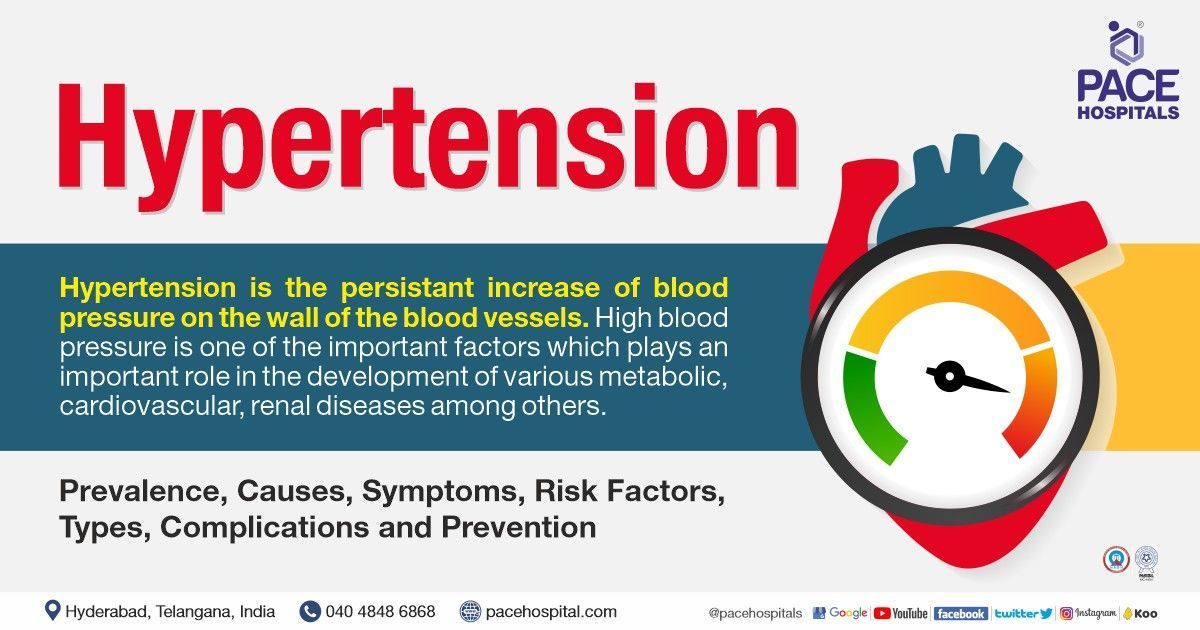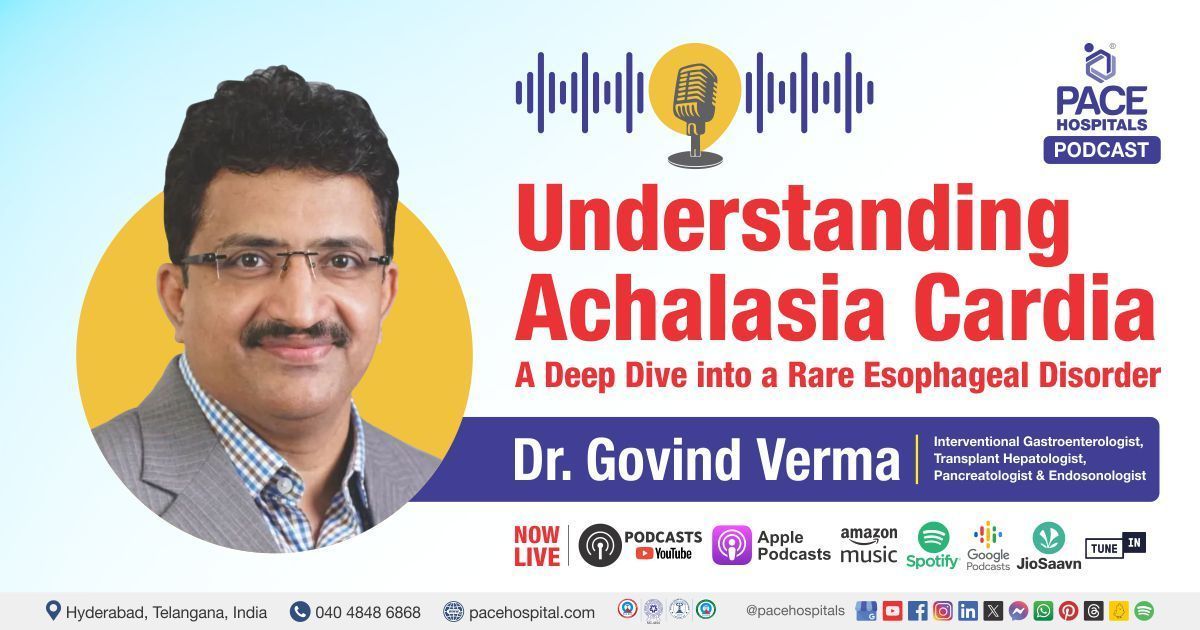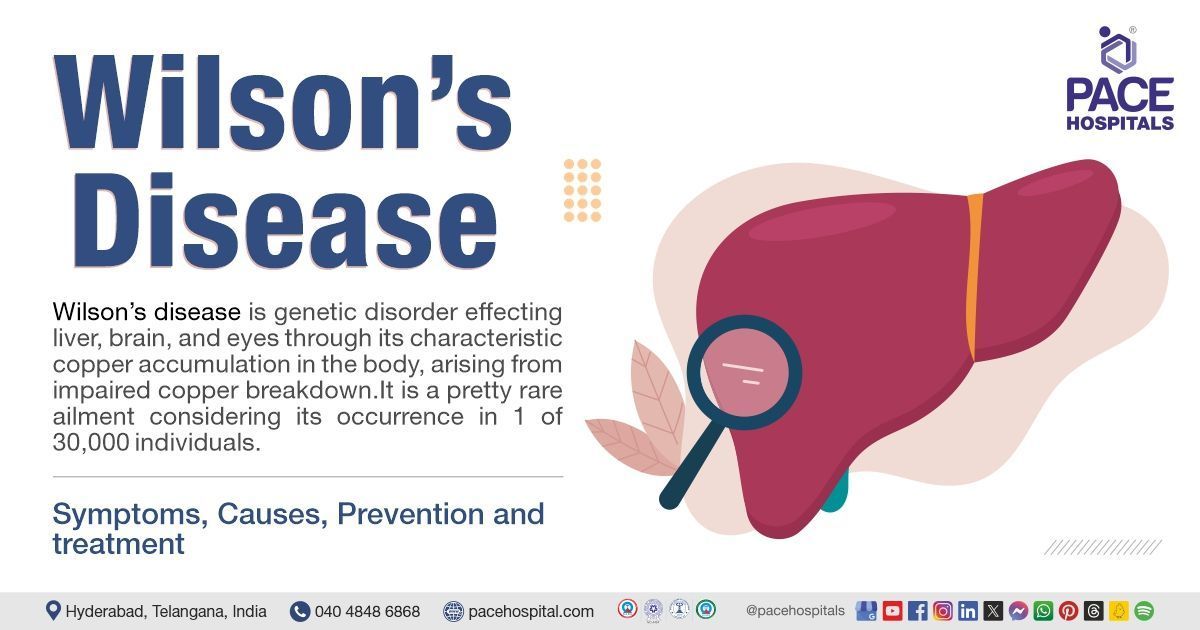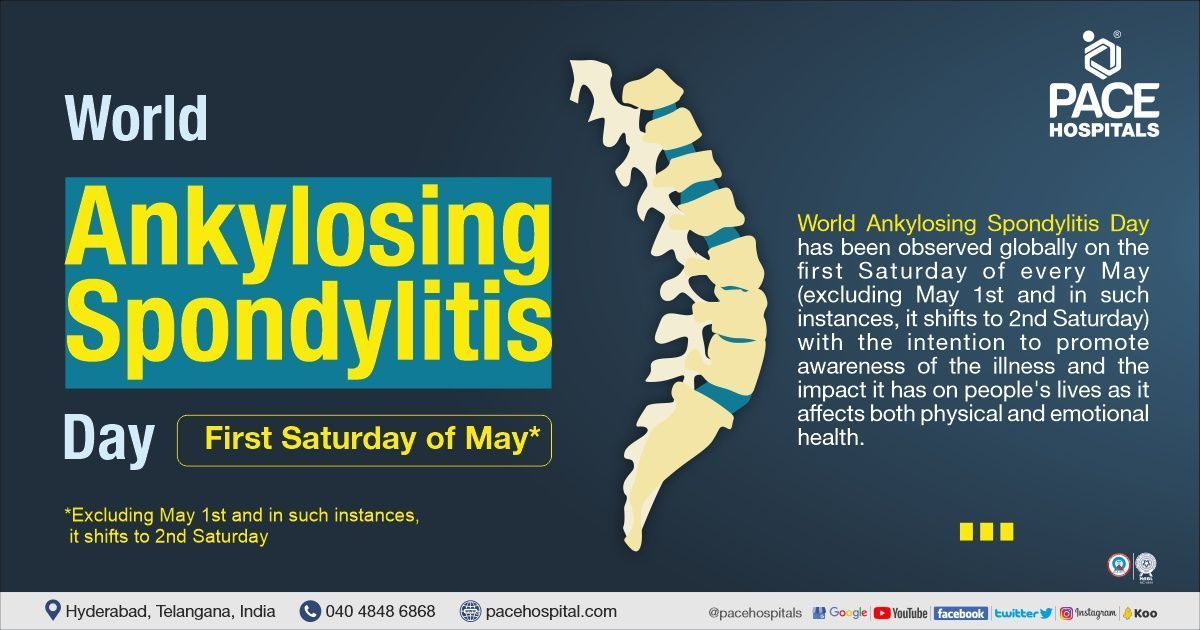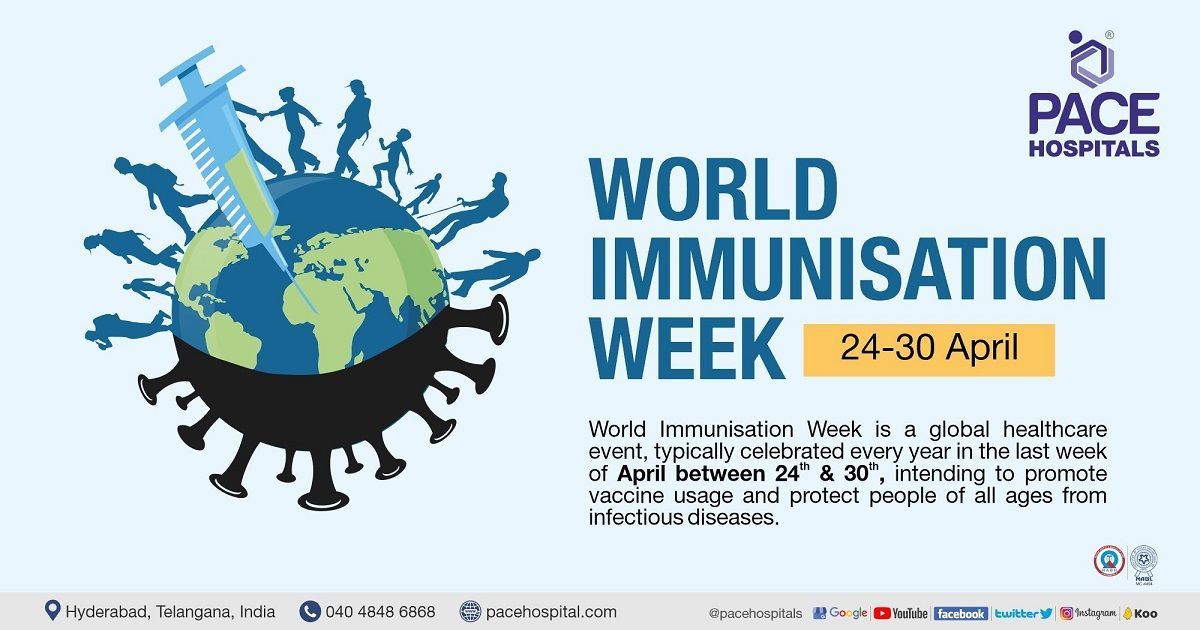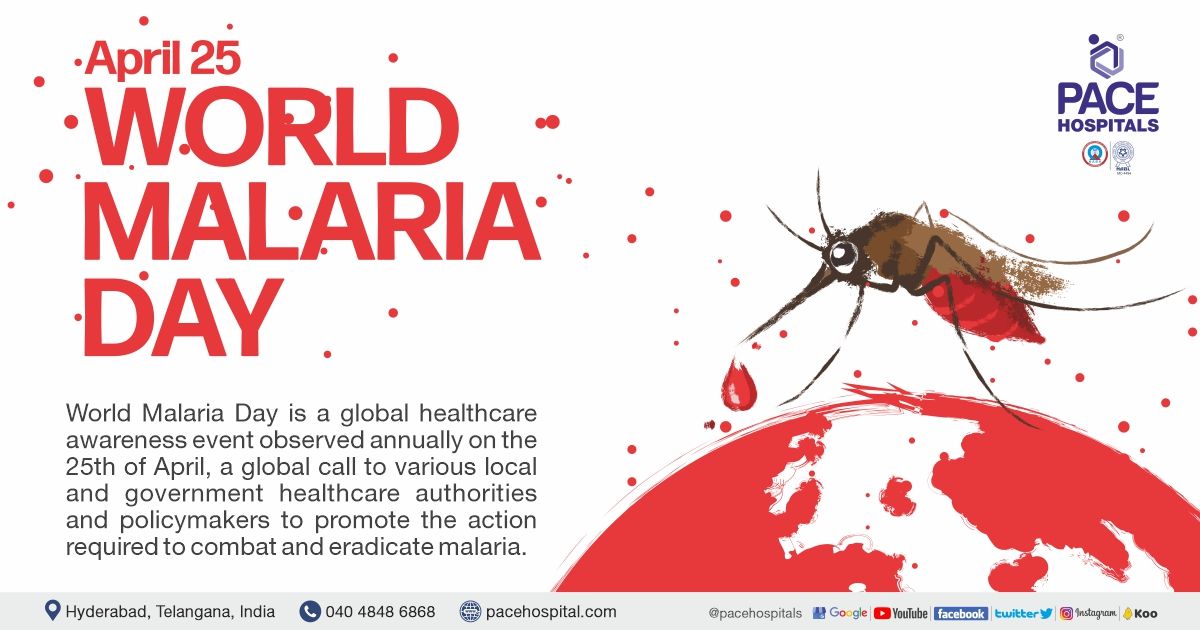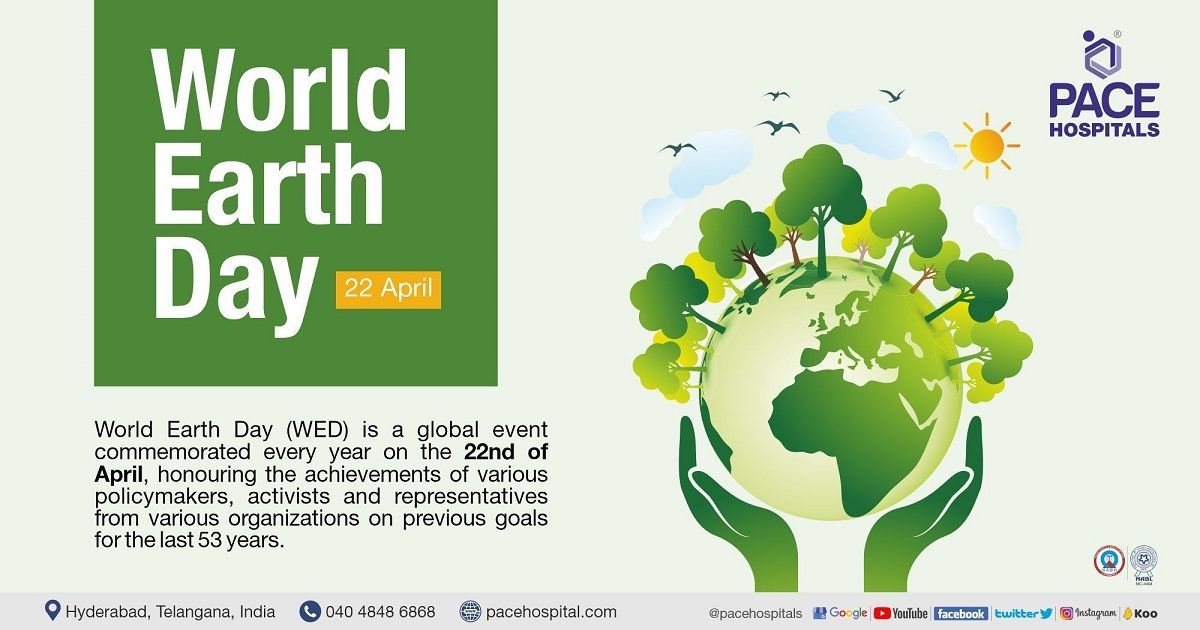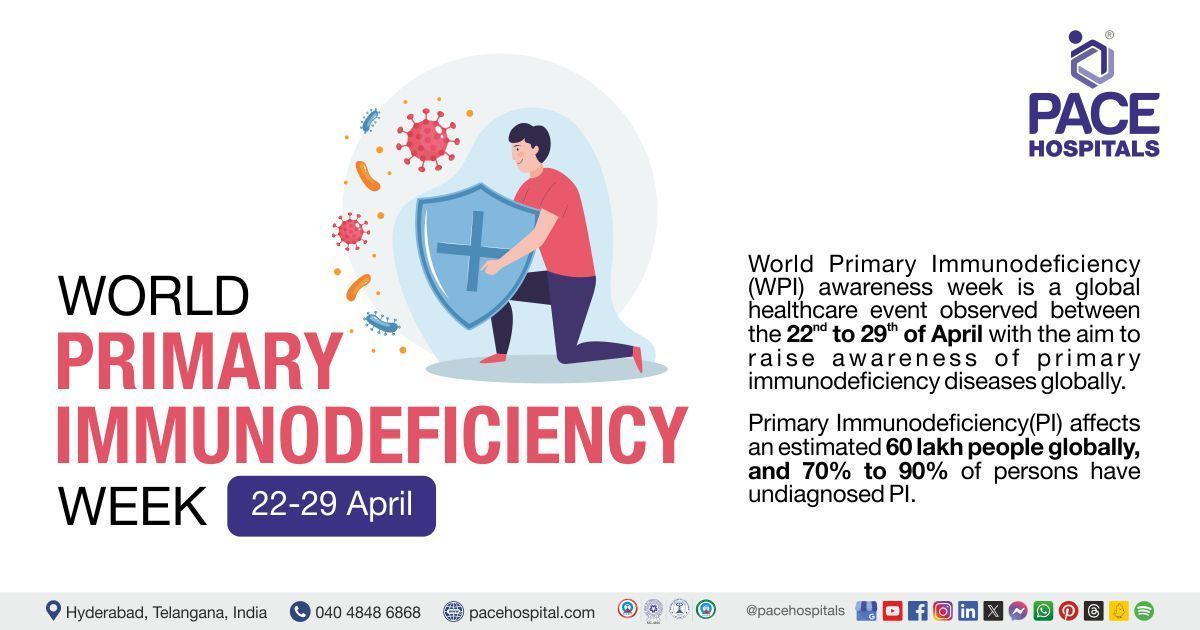Hypertension – Symptoms, Causes, Types, Complications & Prevention
Hypertension meaning
Hypertension is the persistent increase of blood pressure on the wall of the blood vessels, which is the result of two forces: systole and diastole.
- Systolic pressure: The pressure created by pumping blood from the heart into the arteries.
- Diastolic pressure: The pressure created by the resting of the heart between heartbeats.
These two forces are represented during the measurement of blood pressure.
The pressure of blood is ever exerted on the walls of the blood vessels, but only when it shows a constant increase; it is called hypertension (high blood pressure). The blood pressure is exerted in arteries in the first place due to the pumping of blood by the heart.
Pumping of blood to all the tissues and organs of the body is necessary for their survival and proper functioning as oxygen is being delivered by the blood.
Hypertension definition
In accordance with most major guidelines, it is recommended that a person can be deemed hypertensive if the systolic blood pressure (SBP) in the office or clinic is ≥140 mm Hg and/or the diastolic blood pressure (DBP) is ≥90 mm Hg after repeated examinations.
The normal blood pressure is
- Systolic blood pressure <130 mmHg
- Diastolic blood pressure <85 mmHg
Prevalence of hypertension in the world
Despite the stable global age-standardised prevalence, it was found that hypertension doubled between 1990-2019 in people aged 30–79 years, i.e.:
- While 33.1 crore women suffered from hypertension in 1990, the number rose to 62.6 crore in 2019.
- And 31.7 crore men suffered from hypertension in 1990; the number rose to 65.2 crore in 2019.
While a previous diagnosis of hypertension was reported in 59% of women and 49% of men in 2019 worldwide, 47% of women and 38% of men were treated for it. Nevertheless, the control rates were 23% for women and 18% for men. Read the full report
Prevalence of hypertension in India
An estimated 22 crores are suffering from hypertension, although only approximately 12% of them have it under control. According to the National Family Health Survey (NFHS-5) 2019–2020 report, the prevalence of hypertension in:
- Men is 24% which was a 5% increase since the previous report (2015–16).
- Women is 21% which was a 4% increase since the previous report (2015–16).
Currently, the medical body, India Hypertension Control Initiative (IHCI) has been working on the target of reducing at least 25% in the prevalence of hypertension by the year 2025. Read the full report
Etiology of hypertension | Causes of hypertension
Based on the etiology of hypertension, the two causes of hypertension are - essential or primary hypertension and secondary hypertension.
- Causes of essential or primary hypertension: In most patients (about 90% of people), hypertension results from an unknown pathologic etiology (cause) of essential or primary hypertension. This form of hypertension cannot be cured, but it can be controlled. Genetic factors may play an important role in the development of essential hypertension.
- Causes of secondary hypertension: If hypertension occurs a specific cause, it is called secondary hypertension, which is seen in a small percentage of patients. There are many potential causes of secondary hypertension (comorbid diseases or drugs), such as:
| Diseases | Drugs |
|---|---|
| Chronic kidney disease | Amphetamines |
| Cushing’s syndrome | Anti-vascular endothelin growth factor agents |
| Coarctation of the Aorta | Corticosteroids |
| Obstructive sleep apnoea | Calcineurin inhibitors |
| Parathyroid disease | Decongestants |
| Pheochromocytoma | Ergot alkaloids |
| Primary aldosteronism | Erythropoiesis-stimulating agents |
| Renovascular disease | Oestrogen-containing oral contraceptives |
| Thyroid disease | Nonsteroidal anti-inflammatory drugs (NSAIDs) |
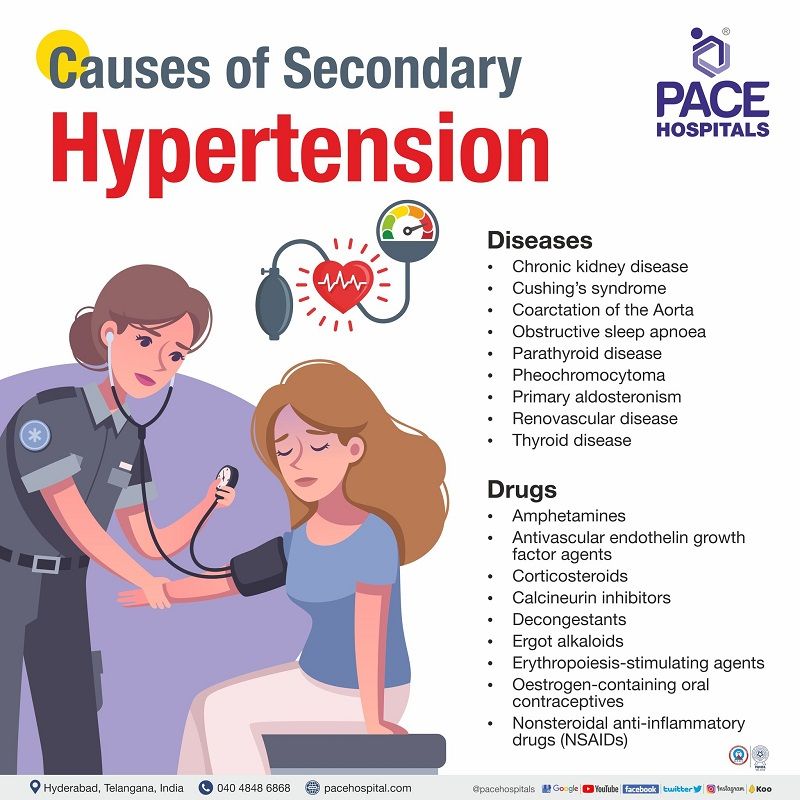
The development of secondary hypertension as a result of diseases or drugs has complex pathways. The most common of them have been simplified and explained below:
- Chronic kidney disease (CKD)- Hypertension, particularly resistant hypertension, can not only occur as a result of CKD, but it is also an important risk factor for CKD progression. At some point, it becomes difficult to determine which disease process precedes the other, as both diseases share similar risk factors.
- Coarctation of the Aorta - The aorta is the body's biggest artery transporting oxygen-rich blood from the heart to the body. Coarctation of the aorta is the narrowing of the aorta, stimulating the heart to pump more vigorously to transport blood through the aorta. The narrowed artery and increased pumping of the heart develops hypertension eventually.
- Obstructive sleep apnoea (OSA) - A sleep disorder with episodes of complete/partial collapse of the airway with a decrease in oxygen saturation or arousal from sleep. This disturbance results in fragmented, nonrestorative sleep, which is prohypertensive.
- Amphetamines – These stimulants of the central nervous system (CNS) accelerate physical and mental processes, momentarily increasing alertness and boosting mood, used to treat narcolepsy, attention deficit hyperactivity disorder (ADHD) etc. Amphetamines increase the heart rate and decrease muscle contraction force. Blood pressure is the result of an increase in cardiac contractility.
- Corticosteroids (also called steroids) – These are the drugs given to reduce inflammation and suppress the agitated immune system. Humans can produce steroids from adrenal glands, but in the case of insufficiency, they can be supplemented externally. Glucocorticoids have been implicated in the controlling of blood pressure through a wide variety of extrarenal tissues, such as the vascular smooth muscle, vascular endothelium, CNS, and adipose tissue.
- Decongestants - These drugs can temporarily relieve stuffy noses (nasal congestion), colds, flu, hay fever, catarrh, and sinusitis. They work by opening the airway and constricting nasal blood vessels. As they might worsen hypertension, patients suffering from hypertension should be cautious when taking these drugs.
Sign and symptoms of hypertension
While the majority of the people suffering from hypertension do not feel any hypertension symptoms (asymptomatic). Hypertension headache is one of the prominent symptoms which can be seen in symptomatic patients with high blood pressure (usually 180/120 mm Hg or higher). The other presenting symptoms include:
- Dizziness
- Vomiting
- Nausea
- Chest pain
- Confusion
- Anxiety
- Nosebleeds
- Buzzing in the ears
- Difficulty breathing
- Abnormal heart rhythm
- Blurred vision or other vision changes
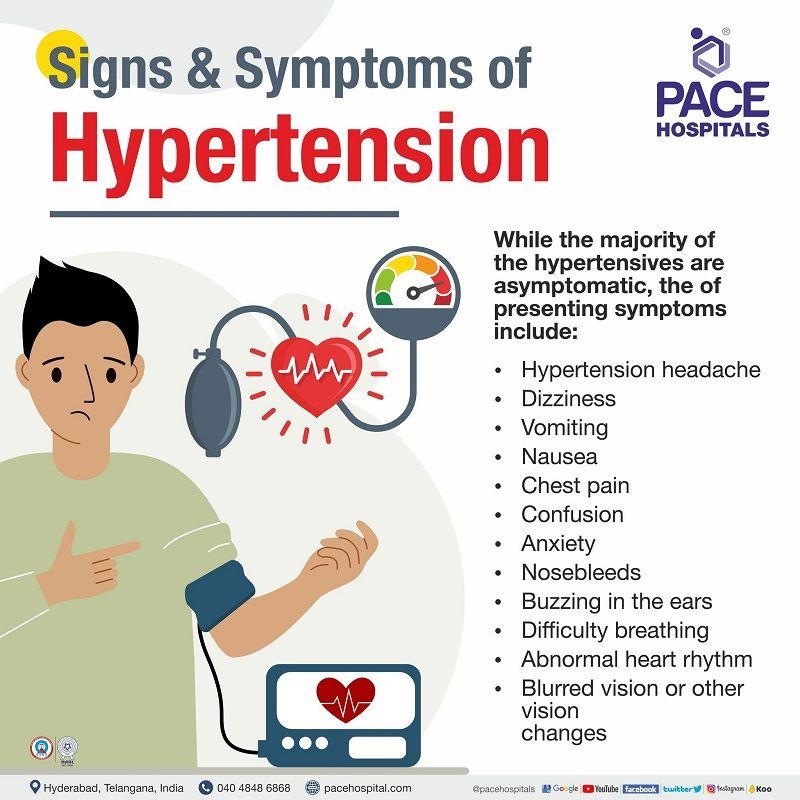
Risk factors of hypertension
High blood pressure risk factors increase with age in both men and women. Although men demonstrate higher blood pressure at younger ages when compared with women, by the age of 60, women tend to have higher blood pressure than men.
Similar to age and gender, the various modifiable risk factors for hypertension include:
- High sodium intake
- Low potassium intake
- Alcohol consumption
- Obesity
- Lack of physical activity
- Unhealthy diet
High sodium intake: While the recommended amount of sodium intake was 2,300 mg or less per day, the global sodium intake reported in 2010 was 3,950 mg per day – a considerably higher intake than the recommended amounts. Particularly, the East Asian countries consumed the most (>4,200 mg per day). Research from several meta-analyses demonstrated the reduction of sodium significantly decreases blood pressure in hypertensive individuals.
Low potassium intake: Observational epidemiological research has found an inverse relationship between blood pressure levels and dietary potassium consumption. Potassium supplementation can reduce systolic pressure by 3.11 mmHg and diastolic pressure by 1.97 mmHg.
Alcoholism: Alcohol consumption globally increased from 5.9 L per capita (1990) to 6.5 L (2017). While light to moderate drinkers had a lower risk of hypertension than non-drinkers, heavy drinkers had a greater risk than both light to moderate drinkers and non-drinkers. Alcoholics drinking six or more drinks per day showed a 5.50 mmHg lower systolic pressure and a 3.97 mmHg lower diastolic pressure with just a 50% reduction in alcohol intake.
Lack of physical activity: At least 150 min or 75 min of vigorous-intensity or moderate intensity per week is the recommended physical activity. Globally, the age-adjusted prevalence of insufficient physical activity is higher in women (31.7%), than in men (23.4%). Insufficient physical activity is greater in urbanised populations. Even moderate physical exercise (such as walking to work) can reduce the risk of incident hypertension.
Overweight and obesity: From 1975 to 2014, the global age-standardised obesity prevalence in men increased from 3.2% to 10.8% and from 6.4% to 14.9% in women. A 5.1 kg body weight decrease (through calorie restriction, increased activity etc.) can reduce systolic pressure by 4.44 mmHg and diastolic pressure by 3.57 mmHg.
Unhealthy diet: There are several macro and micronutrients, including dietary fibre, protein, and fat, are associated with blood pressure maintenance. Seven unhealthy items which are cause hypertension are saturated fat, trans fat, unprocessed red meats, sugar-sweetened beverages, processed meats, dietary cholesterol, and sodium. Mediterranean and vegetarian diets are associated with blood pressure reduction.
Other potential risk factors: The other risk factors which could develop hypertension include cigarette smoking, air pollution, psychological stress, sleep difficulties, and noise exposure.
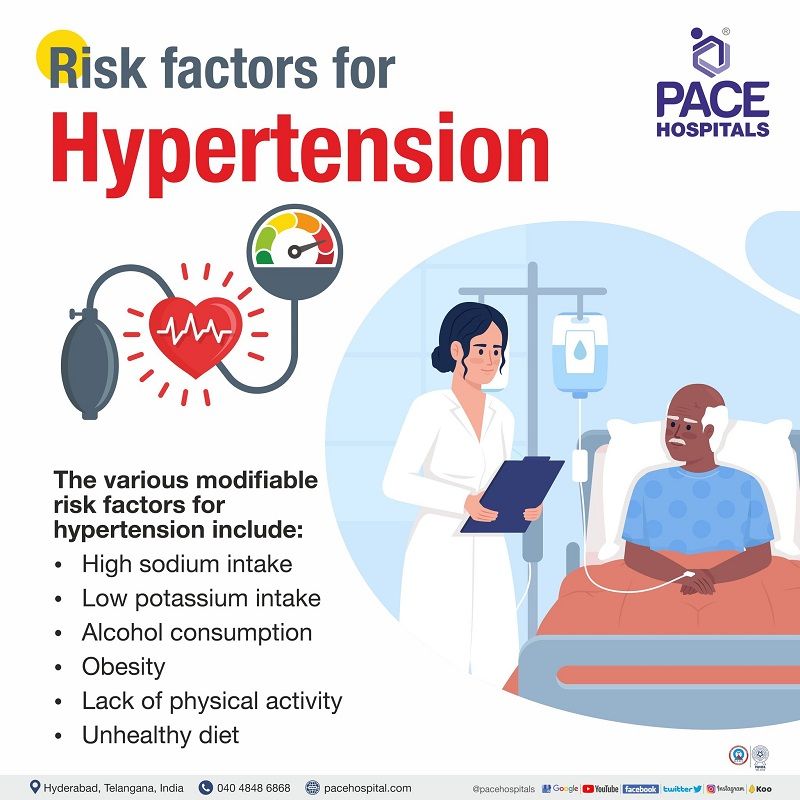
Types of hypertension
Depending on the effect of hypertension over the body or limited to an area, hypertension types can be divided into systemic hypertension and localised hypertension.
There are various types of systemic hypertension are:
- Essential or primary hypertension: This type of hypertension can be attributed to an unknown cause and is seen in most patients (about 90% of people). Essentially genetics play an important role in it.
- Secondary hypertension: This type of hypertension occurs due to various specific causes.
- Malignant hypertension: Severe high blood pressure causing target organ damage.
- Isolated systolic hypertension: Hypertension is commonly seen in the elderly due to elasticity loss in major arteries.
- Resistant hypertension: Persistence of high blood pressure despite taking more than three different antihypertensive agents.
- Refractory hypertension: Persistence of high blood pressure despite taking more than five different antihypertensive agents.
- Postpartum hypertension: Blood pressure peaks between three and six days, even in mothers with normal blood pressure after giving birth.
- Preeclampsia (gestational hypertension): During pregnancy, it is common to experience hypertension called gestational hypertension or preeclampsia which increases the risk of maternal death and foetal defects.
- White coat hypertension: In this case, hypertension occurs during hospital visits but is normal elsewhere. In India, surprisingly, younger populations demonstrate a higher risk of white coat hypertension compared with the elderly.
- Masked hypertension: Blood pressure seems normal in the doctor’s office, but high blood pressure is seen when out of the office.
- Labile hypertension: Frequent fluctuations (between normal and high) in blood pressure.
- Nocturnal hypertension: Hypertension is seen only during the nighttime (BP ≥120/70 mmHg). It can cause subclinical organ damage.
- Permissive hypertension: Treatment-induced technique (by reducing hypertensive medication) in maintaining higher blood pressure after a stroke. It promotes faster recovery.
- Asthma hypertension: Hypertension associated with asthma. This was confirmed through years of research but with unknown causes.
- Carcinoid hypertension: Cancer releases chemicals in the blood, which brings various complications. Hypertension is one of them.
- Pseudohypertension: A falsely elevated blood pressure measurement seen in the elderly, diabetics, or in those with chronic kidney disease caused by rigid, calcified brachial arteries.
There are various types of local hypertension are:
- Portal hypertension: Elevated blood pressure in the liver (portal vein) and capillaries branching from the same.
- Pulmonary hypertension: Elevated blood pressure exerted against the blood vessels going from the heart to the lungs.
- Idiopathic intracranial hypertension: Increased pressure around the brain (due to unknown reasons) causing vision changes and headaches.
- Epididymal hypertension: During the arousal state, blood is built up in the testicles, causing pain and rigid erection. This condition is also called blue balls.
- Ocular hypertension: Increased intraocular pressure (high pressure in aqueous humour in the eyes) due to failure in fluid drainage.
- Postural hypertension: Hypertension during an upright posture, also called orthostatic hypertension.
- Renovascular hypertension: Compromised blood flow to the kidneys, leading to renovascular hypertension. This serious condition could lead to heart attack, stroke, and even death.
- Venous hypertension: Elevated blood pressure in veins, especially in the lower extremities (legs), due to weakened vein valves.
- Paediatric hypertension: Elevated blood pressure of children and adolescents when the measurement is in between the 90th and 95th percentiles for height, gender, and age, and as having hypertension when their blood pressure is greater than or equal to the 95th percentile.
- Reactive pulmonary hypertension: During hypoxia (low level of oxygen), blood pressure in pulmonary vasculature is seen, which can be treated by medicines and/or by increasing the alveolar oxygen tension.
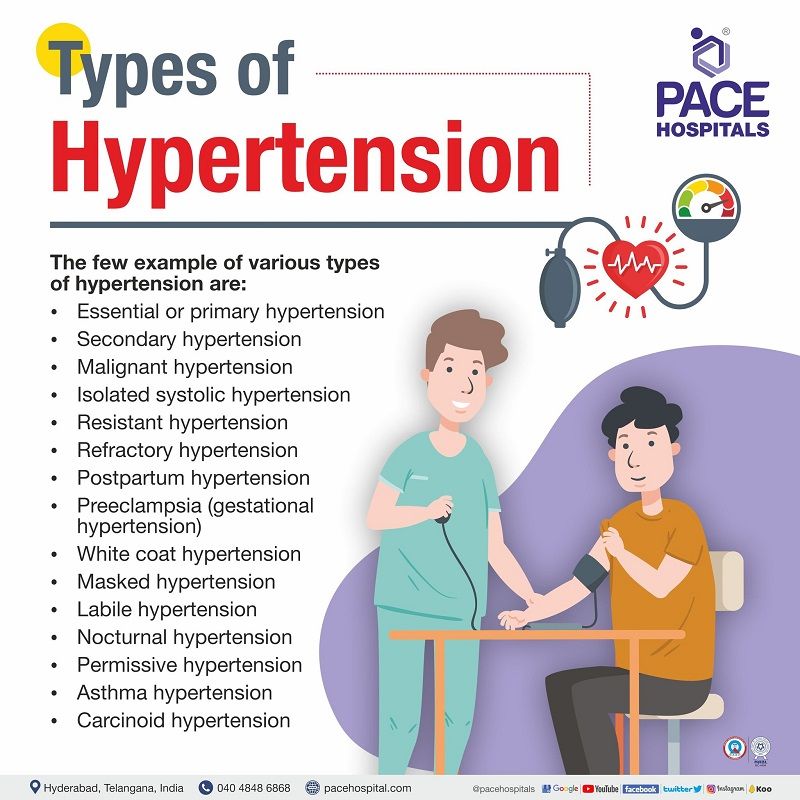
Hypertension in pregnancy
Hypertension during pregnancy is a major cause of maternal and neonatal morbidity and mortality. Various hypertensive disorders in pregnancy include the following preeclampsia, eclampsia, gestational, chronic, and superimposition of preeclampsia on chronic hypertension.
Definitive treatment of preeclampsia is delivery. Also, management consists of restricting activity, bedrest, and close monitoring. An important albeit interesting attribute in treating hypertension in pregnancy is that neither salt restriction, nor any other measures that contract blood volume, will not be employed as it could disrupt the circulatory system of the mother and foetus.
Although various there are various medical agents that can be used to treat chronic hypertension in pregnancy, the gynaecologists take utmost care in prescribing the correct pharmaceuticals as the chances of side effects are high.
Accelerated hypertension
Accelerated hypertension (also called the malignant hypertension or hypertensive crisis) describes the phenomenon of poor prognoses with increased blood pressure associated with multiple complications with poor.
Hypertensive crisis can be described among patients with systolic blood pressure greater than 180 mm Hg and diastolic blood pressure greater than 120 mm Hg.
Hypertensive emergency arises when blood pressure rises rapidly in a short amount of time. The most prevalent causes of end-organ damage are an increase in systemic vascular resistance caused by various factors such as hypoperfusion, and ischemia.
Furthermore, as red cells move through the constricted capillaries, they are frequently destroyed, resulting in microangiopathic haemolytic anaemia. A loss of autoregulation in the brain, which might manifest as hypertensive encephalopathy, is another symptom of a hypertensive crisis.
Complications of hypertension
Complications of hypertension can develop target-organ damage. The primary organs involved are the eye, brain, heart, kidneys, and peripheral blood vessels.
- Hypertension accelerates atherosclerosis (fat deposition in arteries) and stimulates left ventricular hypertrophy (abnormal increase in the heart muscle), among other diseases.
- Hypertension can cause cerebrovascular diseases, especially hemiparesis (paralysis of one side of the body) and other gross neurologic deficits.
- Retinopathies (diseases of the eye) can occur in hypertension, such as hypertensive retinopathy. Accelerated arteriosclerosis also plays an important role in these retinopathies.
- The best-identified form of target-organ damage is the heart diseases such as ventricular hypertrophy (abnormal increase in the muscle of heart ventricle), coronary heart disease, angina coronary revascularization, heart failure (heart muscle can’t pump blood as needed) etc. These can also lead to sudden death.
- Hypertension-induced kidney damage is associated with arteriosclerosis, arteriolar hypertrophy (thickening of small arteries in kidneys), fibrinoid necrosis (cell death in small blood vessels), and atheroma (fat deposition) of the major renal arteries and nephrosclerosis (hardening of the kidney).

Prevention of hypertension
Severe hypertension increases cardiovascular risk. Reducing blood pressure can reduce the risk and prevent or delay age-related hypertension. Even minor changes in a person's lifestyle can be beneficial. Hypertension prevention can be done through the incorporation of various lifestyle changes such as:
- Weight loss
- Reduced sodium intake
- Increased potassium intake
- Increased physical activity
- Reduced alcohol consumption
- Incorporation of Dietary Approaches to Stop Hypertension (DASH) diet.
Hypertension diagnosis
The diagnosis of hypertension is commonly established by the repeated sphygmomanometer measurements. The medical personnel also conducts the following tests to understand the extent of damage long-standing hypertension might have caused:
- 12-lead electrocardiogram
- Spot urine albumin-to-creatinine ratio
- Blood glucose and haematocrit
- Serum potassium
- Serum creatinine (with estimated glomerular filtration rate [GFR])
- Serum calcium
- Fasting lipid panel
Hypertension treatment
Hypertension treatment can be managed by various drugs such as
- Diuretics
- Beta-blockers
- ACE inhibitors
- Angiotensin II receptor blockers
- Calcium channel blockers
- Alpha blockers
- Alpha-2 receptor agonists
- Combined alpha and beta-blockers
- Vasodilators
Frequently Asked Questions - FAQs
-
What is hypertension?
Hypertension is a metabolic condition of the persistence of high blood pressure exerted by the blood against the walls of blood vessels -the blood vessels which carry oxygenated blood from the heart to the organs. It is the common cause of various complications, especially cardiovascular diseases.
-
How to reduce hypertension?
There are various drugs which can be used to treat hypertension; a few of the non-pharmacological measures which should occur in parallel to reduce hypertension are:
- Weight loss causes a reduction in blood pressure of about 2.5/1.5 mmHg/kg.
- The DASH diet (Dietary Approaches to Stop Hypertension).
- Avoiding salt, red meat, and confectionery.
- Regular aerobic exercise, at least three times a week for at least 30 minutes, derives maximum benefit.
- Avoiding alcoholism and smoking.
-
How long does epididymal hypertension last?
Although thorough and proper research to understand the duration of epididymal hypertension was yet to be undertaken, a study published in the year 2000 demonstrated the case of a 14-year-old who was presented to the emergency department with epididymal hypertension. It was confirmed that the duration of “blue balls” he was suffering was 1.5 hours.
-
What causes high blood pressure?
The cause of hypertension can be due to various comorbid diseases or drugs, such as chronic kidney disease, Cushing’s syndrome, coarctation of the aorta, corticosteroids, calcineurin inhibitors and decongestants, among others.
-
What lab test for hypertension is advised?
The lab tests include various exams such as blood cell count, urinalysis, blood chemistry (creatinine, fasting glucose, potassium, sodium, total cholesterol), and an electrocardiogram. All these tests are necessary to understand not only the extent of hypertension but also the other various complications which may occur due to persistent hypertension.
-
How is hypertension evaluated?
Hypertension is generally evaluated primarily through the accurate measurement of a patient's blood pressure through a sphygmomanometer. Additionally, a detailed physical examination and medical history may be necessary, along with routine laboratory studies and a 12-lead electrocardiogram.
-
Can an ECG detect hypertension?
Yes. ECGs (also called electrocardiograms) can be used to detect hypertension. In fact, it may be further utilised to provide 24-hour continuous monitoring of hypertension for alerting healthcare personnel about their patients who are suffering from acute conditions such as hypertensive emergencies or preeclampsia.
-
What is the first drug of choice for hypertension?
The medication and treatment regime of hypertension greatly depends on hypertension complications, age, and obesity, among various other factors. Since the treatment varies case by case, the first drug of choice for hypertension cannot be ascertained; nevertheless, the four main classes of medication that are usually prescribed as the first line of treatment are:
- Calcium Channel Blockers (CCB)
- Angiotensin Converting Enzyme inhibitors (ACE inhibitors or ACE-I) and
- Angiotensin Receptor Blockers (ARBs)
- Diuretics
-
Can hypertension be cured?
No, hypertension cannot be cured. Although high blood pressure is asymptomatic, it can quietly damage blood vessels and cause major health issues. While there is no cure for high blood pressure, it is critical for people to act by making healthy lifestyle changes and taking blood pressure medications as prescribed by their doctors. As a result, those modifications can improve their quality of life and lower heart risks, renal disease, stroke, and other conditions.
-
Can hypertension be cured naturally?
Unfortunately, there is no treatment for hypertension it can control; it can be managed with regular exercise, weight loss, avoiding salt and taking medications.
Request an appointment
Fill in the appointment form or call us instantly to book a confirmed appointment with our super specialist at 04048486868
Appointment request - health articles
Thank you for contacting us. We will get back to you as soon as possible. Kindly save these contact details in your contacts to receive calls and messages:-
Appointment Desk: 04048486868
Whatsapp: 8977889778
Regards,
Pace Hospitals
Hitech City and Madinaguda
Hyderabad, Telangana, India.
Oops, there was an error sending your message. Please try again later. We will get back to you as soon as possible. Kindly save these contact details in your contacts to receive calls and messages:-
Appointment Desk: 04048486868
Whatsapp: 8977889778
Regards,
Pace Hospitals
Hitech City and Madinaguda
Hyderabad, Telangana, India.
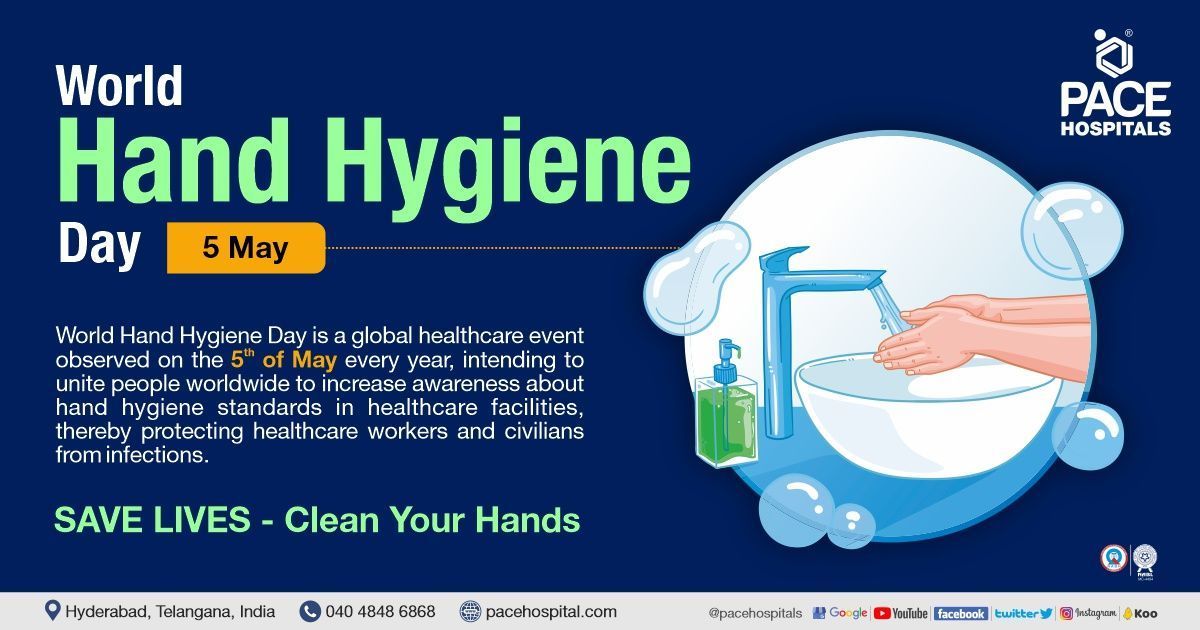
Our Locations
Subscribe to our newsletter and stay updated with the latest health information.
By clicking on subscribe now, you accept to receive communications from PACE Hospitals on email, SMS and Whatsapp.
Subscribe to PACE Hospitals News
Thank you for subscribing. Stay updated with the latest health information.
Oops, there was an error. Please try again submitting your details.
-

Payment in advance for treatment (Pay in Indian Rupees)
For Bank Transfer:-
Bank Name: HDFC
Company Name: Pace Hospitals
A/c No.50200028705218
IFSC Code: HDFC0000545
Bank Name: STATE BANK OF INDIA
Company Name: Pace Hospitals
A/c No.62206858997
IFSC Code: SBIN0020299
Scan QR Code by Any Payment App (GPay, Paytm, Phonepe, BHIM, Bank Apps, Amazon, Airtel, Truecaller, Idea, Whatsapp etc)
Call us at 04048486868
ADDRESS
PACE Hospitals
Hitech City : Beside Avasa Hotel, Pillar No. 18, Hyderabad - 500081
Madinaguda: Mythri Nagar, Beside South India Shopping, Madinaguda, Hyderabad - 500050
QUICK LINKS
Disclaimer
General information on healthcare issues is made available by PACE Hospitals through this website (www.pacehospital.com), as well as its other websites and branded social media pages. The text, videos, illustrations, photographs, quoted information, and other materials found on these websites (here by collectively referred to as "Content") are offered for informational purposes only and is neither exhaustive nor complete. Prior to forming a decision in regard to your health, consult your doctor or any another healthcare professional. PACE Hospitals does not have an obligation to update or modify the "Content" or to explain or resolve any inconsistencies therein.
The "Content" from the website of PACE Hospitals or from its branded social media pages might include any adult explicit "Content" which is deemed exclusively medical or health-related and not otherwise. Publishing material or making references to specific sources, such as to any particular therapies, goods, drugs, practises, doctors, nurses, other healthcare professionals, diagnoses or procedures is done purely for informational purposes and does not reflect any endorsement by PACE Hospitals as such.

